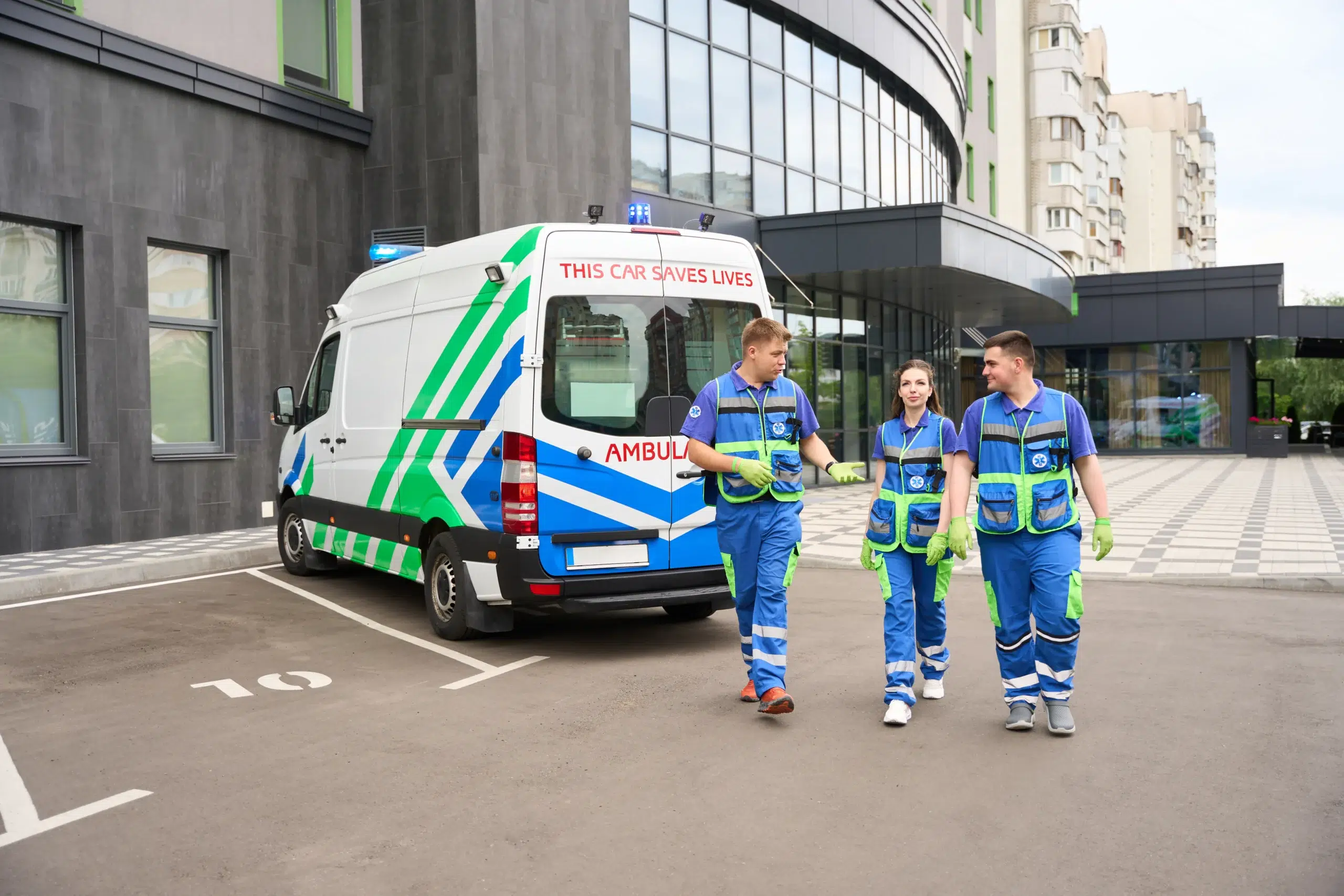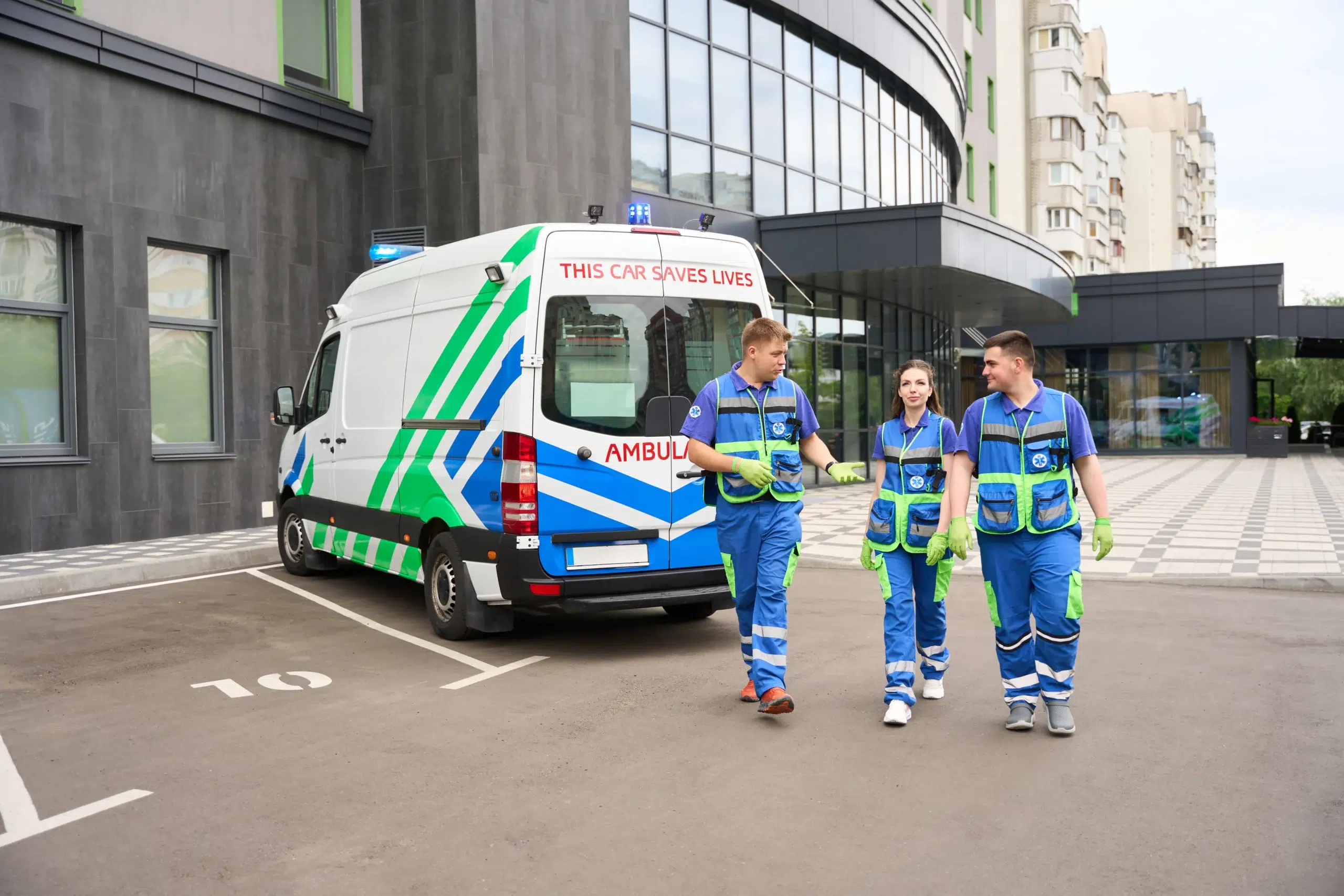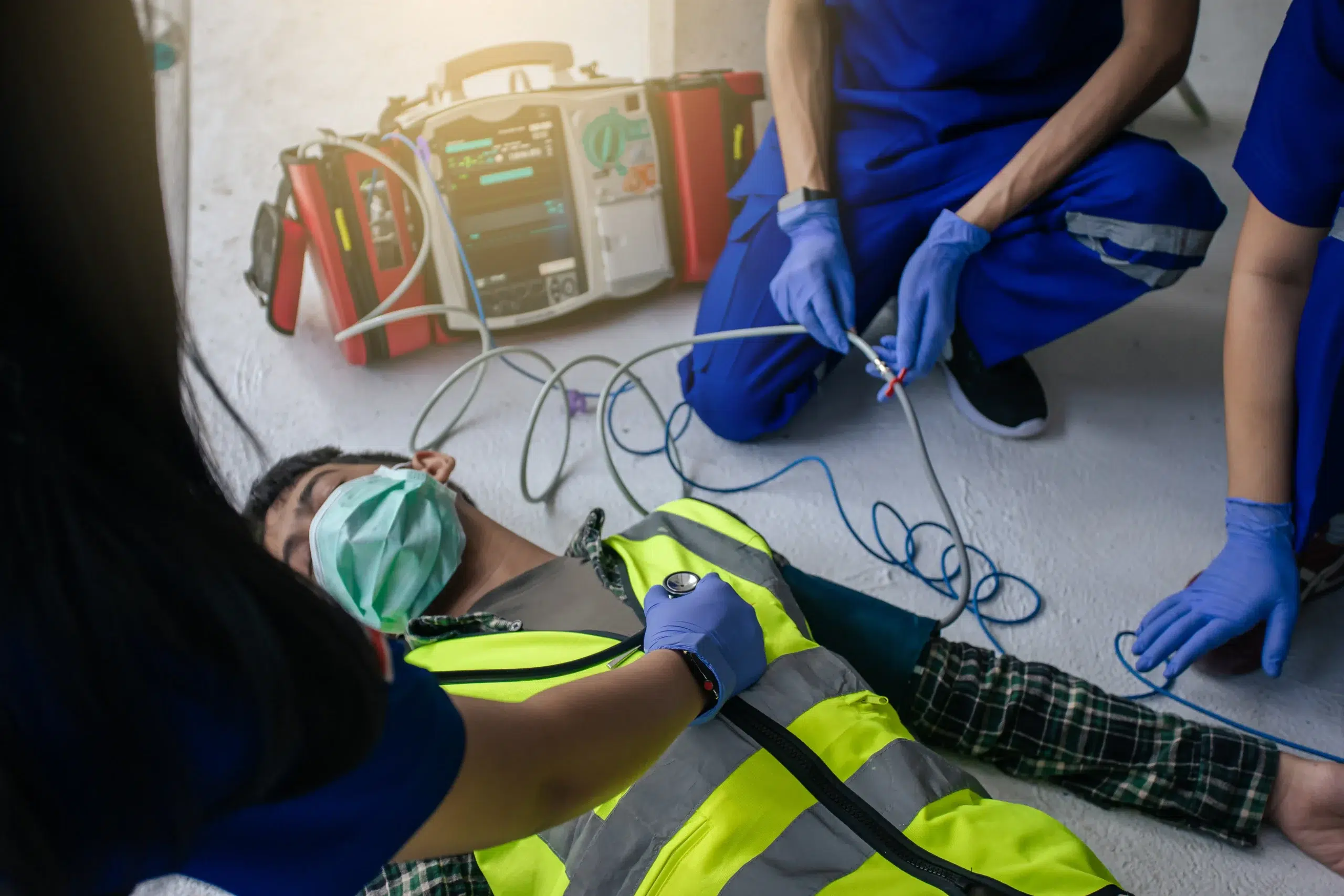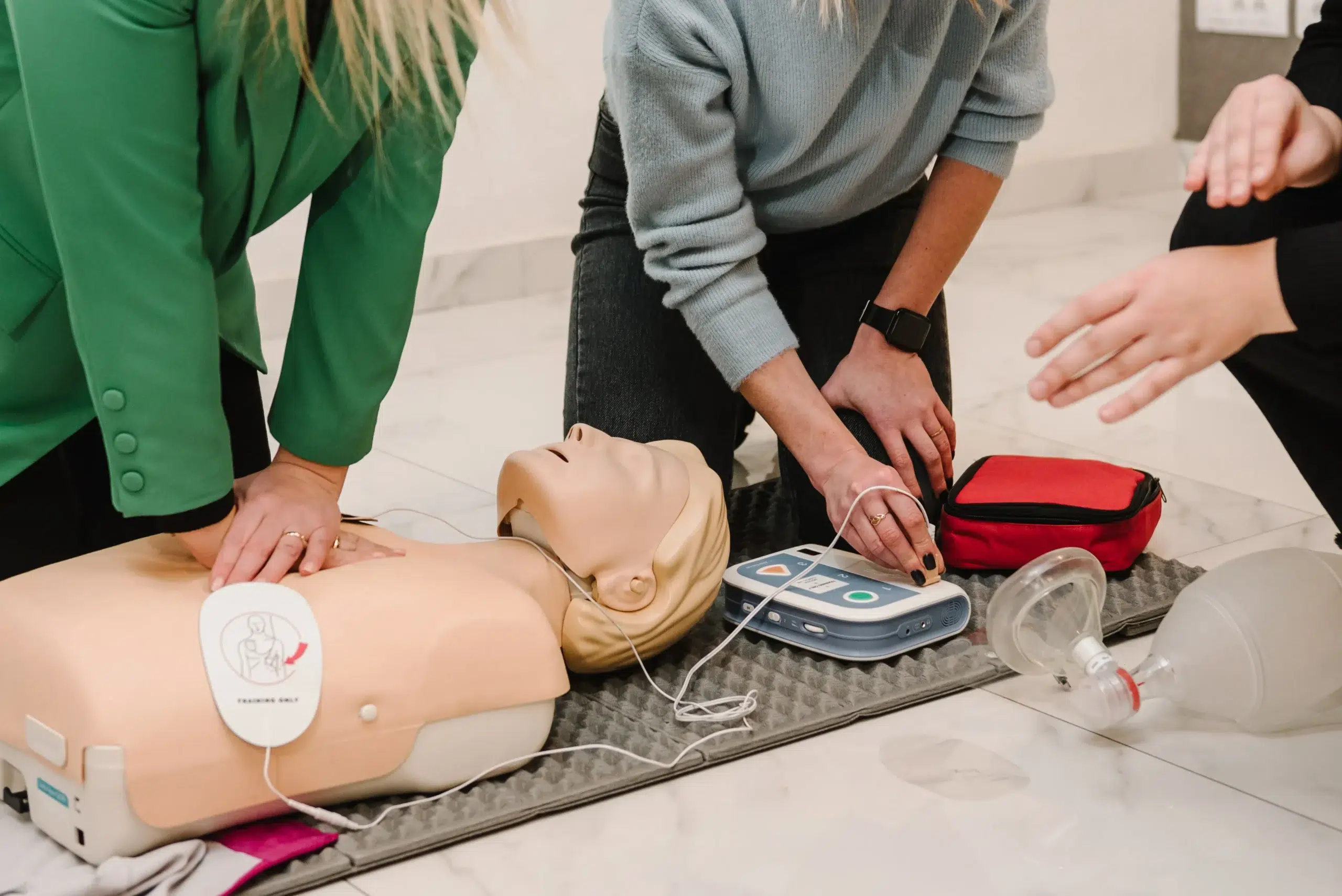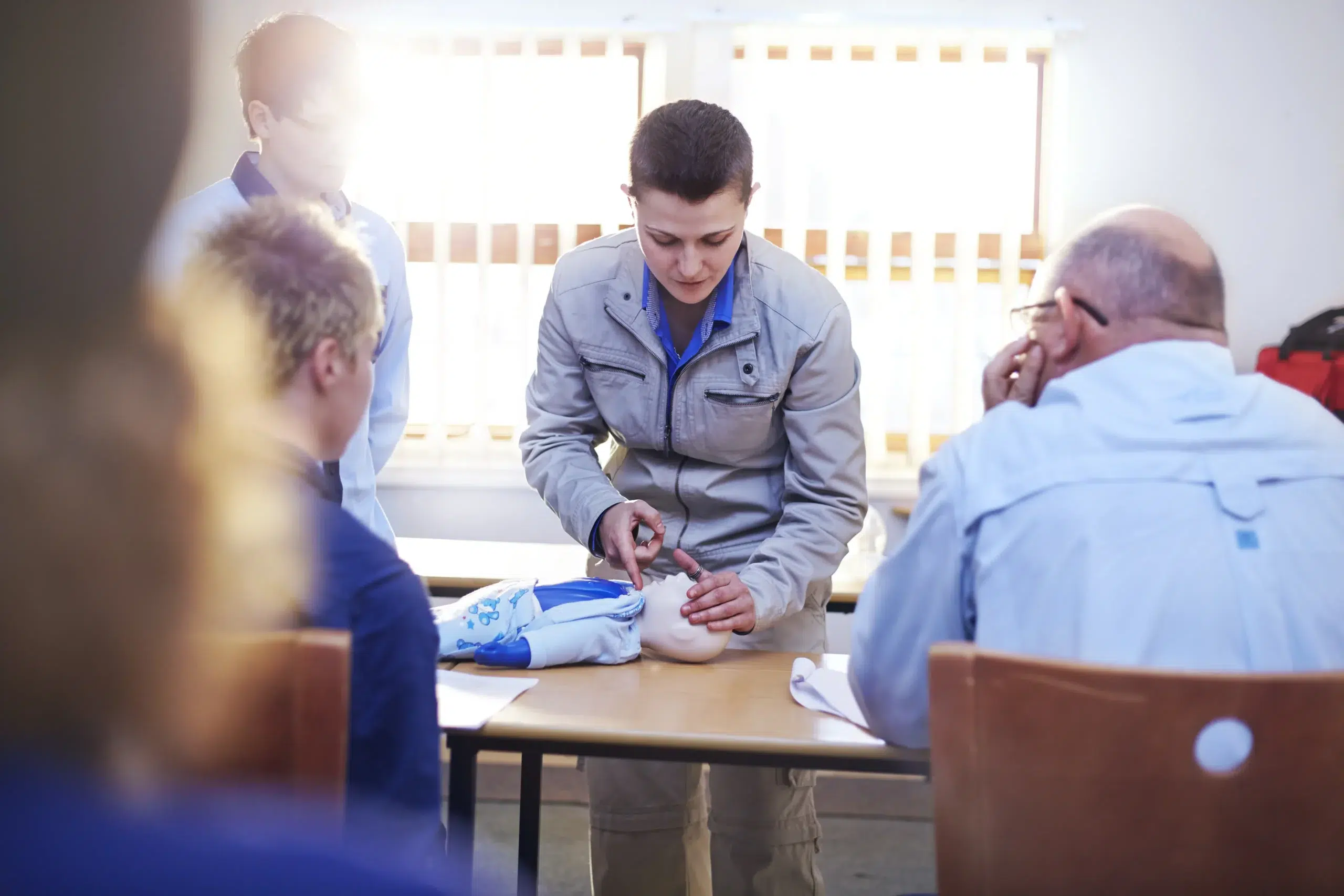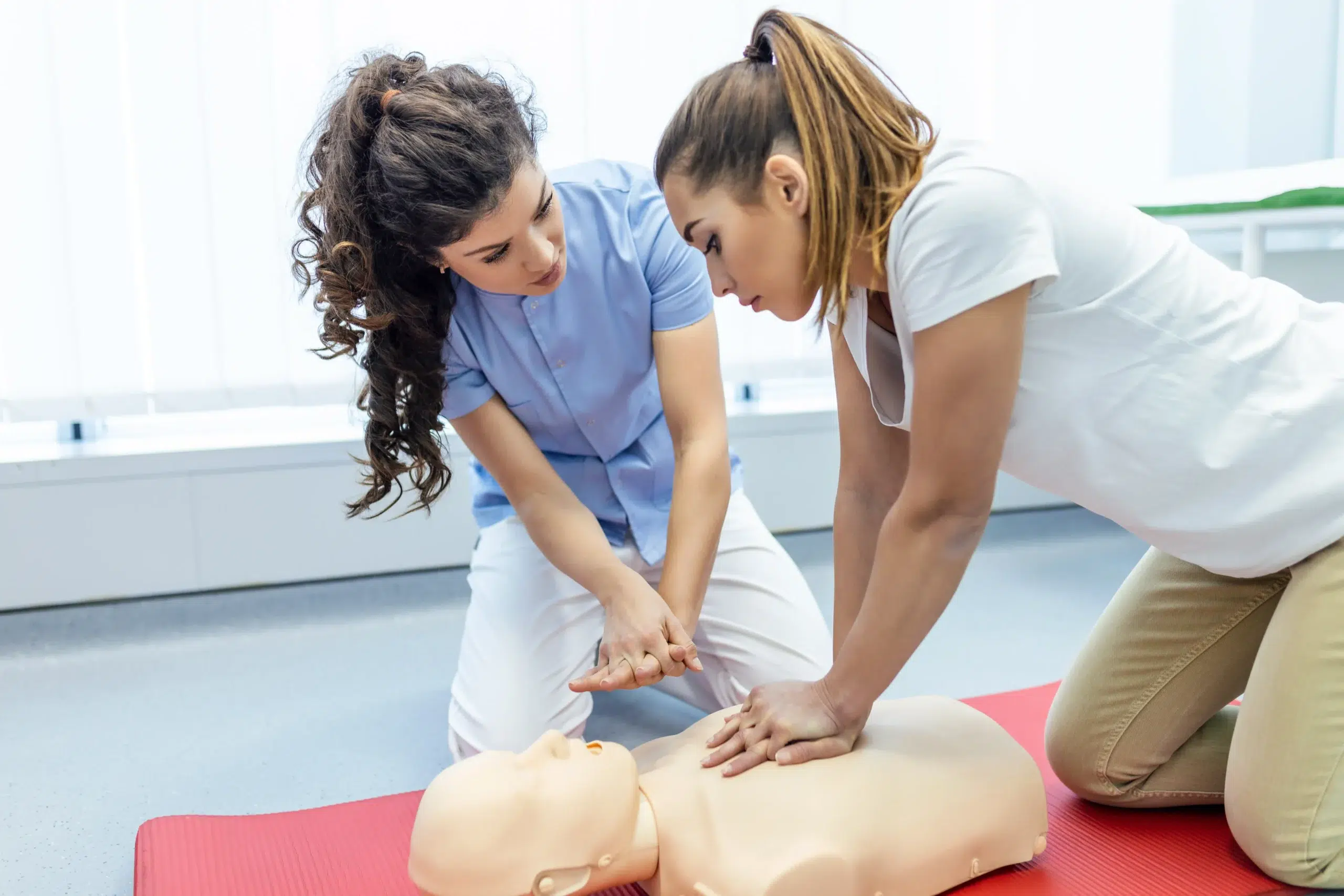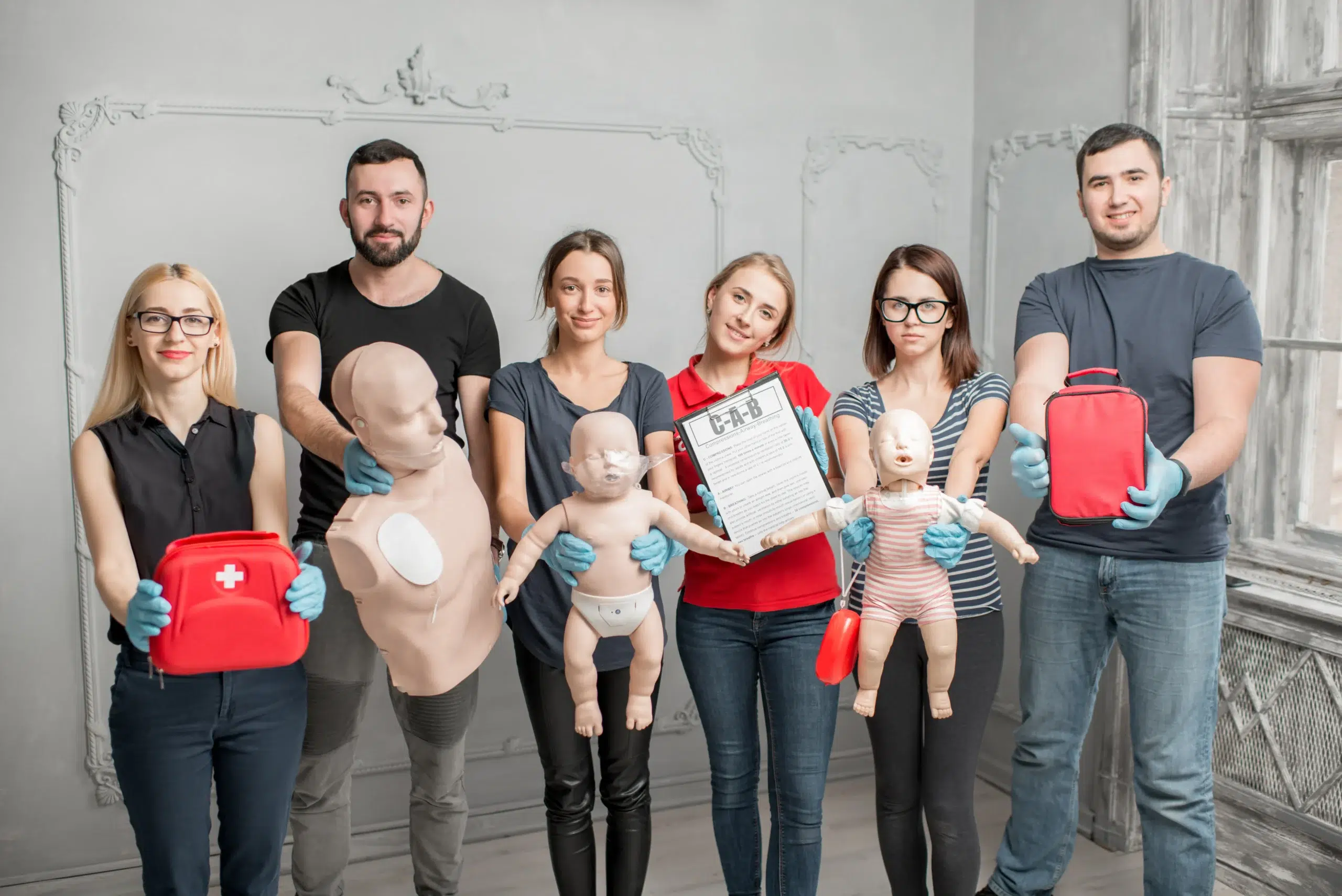In a medical emergency, knowing cardiopulmonary resuscitation (CPR) can be the difference between life and death. If you’ve searched for “cardio pulmonary resuscitation near me,” you’re on the right track. This guide will help you navigate the world of CPR training, from understanding the basics to finding the perfect course for your needs. We’ll cover everything from course types and costs to certification processes and the importance of ongoing training. Whether you’re a healthcare professional, a childcare provider, or simply someone who wants to be prepared, this guide will empower you to take action and potentially save a life.
Key Takeaways
- CPR training equips you to make a difference: Learning CPR, regardless of your background, empowers you to provide immediate assistance in medical emergencies. Find a course that fits your schedule and learning style, whether in-person, online, or blended.
- Select the right CPR course for your needs: Consider your goals and requirements when choosing a course. Look for accredited providers with qualified instructors, a variety of courses, and hands-on training opportunities.
- Stay current with your CPR certification: Maintain your skills and knowledge by renewing your certification regularly and pursuing continuing education options. This ensures you’re always prepared to respond effectively in a crisis.
What is CPR?
CPR stands for cardiopulmonary resuscitation. It’s a life-saving technique used when someone’s heart has stopped beating or is beating too weakly to circulate blood effectively. This is called cardiac arrest, and it’s a medical emergency. Learning CPR empowers you to provide immediate assistance until professional help arrives. CPR involves chest compressions and rescue breaths, which help maintain some blood flow to the brain and other vital organs. It’s a skill anyone can learn, regardless of their background. Even if your certification has lapsed, performing CPR in an emergency can still make a difference. The CDC recommends taking action even with an expired certification.
What is CPR and why is it important?
CPR combines chest compressions and rescue breaths to help someone whose heart has stopped beating. These actions help circulate oxygenated blood to the brain and other vital organs, buying precious time until paramedics arrive. CPR training equips you with the knowledge and skills to respond effectively in such critical situations. It’s about empowering individuals to make a real difference and potentially save a life. For more information on CPR, check out the American Heart Association’s CPR resources.
When do you need CPR?
CPR is necessary when someone is in cardiac arrest. This means their heart isn’t beating effectively, cutting off blood supply to vital organs. Recognizing the signs of cardiac arrest is crucial. These can include sudden collapse, unresponsiveness, and absence of normal breathing. If you encounter someone in this state, immediate CPR can be the difference between life and death. It bridges the gap between the onset of cardiac arrest and the arrival of professional medical help. The Red Cross offers a helpful guide on how to recognize cardiac arrest. and how to respond.
Find CPR Training Near You
Ready to take a CPR class? Locating a course that fits your needs is easier than you think. Here’s how to find CPR training near you:
Search Online
Start with a simple online search. Use keywords like “CPR training” plus your city or zip code. The American Red Cross website offers a class locator tool, allowing you to filter by location and course type. Many other CPR training organizations have similar online search features, making it easy to find a class that fits your schedule.
Explore Local Resources
Think local! Your community likely has several resources offering CPR training. Check with your local community centers, fire departments, and hospitals. Many fire departments offer CPR classes to residents. These classes are often a great way to learn CPR and connect with your community. You can often find information about these classes on their websites or by contacting them directly.
Top CPR Training Providers
Here are a few well-known CPR training providers to explore:
American Red Cross
The American Red Cross is a leading provider of CPR training, offering a range of courses to meet different needs. They offer various learning formats, including in-person and online options, making it convenient to fit CPR training into your busy life.
American Heart Association
The American Heart Association also provides comprehensive CPR training programs. Many organizations offer AHA-certified courses, so you can likely find one nearby. Pleasant Hill CPR Classes, for example, offers a variety of AHA-certified courses.
Local Fire Departments and Hospitals
As mentioned earlier, your local fire department or hospital is a great place to check for CPR training. These organizations often have established programs and experienced instructors, providing high-quality training within your community.
Pleasant Hill CPR Classes
Pleasant Hill CPR Classes offers a variety of American Heart Association-certified courses, including BLS, ACLS, PALS, and First Aid. We’re proud to serve Pleasant Hill, Walnut Creek, and Concord. We offer flexible scheduling and a low price guarantee, making high-quality CPR training accessible. Contact us today to learn more!
Choose the Right CPR Course
Knowing which CPR course fits your needs can feel overwhelming with so many options. This section breaks down the different types of CPR training available, so you can choose the best one for you.
Basic CPR for the General Public
If you’re learning CPR for personal knowledge or to help in everyday emergencies, a basic CPR and AED course is a great starting point. Organizations like the American Red Cross offer these classes, covering essential life-saving techniques for adults, children, and infants. These courses often include AED training and are offered in various formats, including in-person, online, and blended learning, making it easy to fit into your schedule.
Basic Life Support (BLS) for Healthcare Professionals
Healthcare providers, first responders, and other medical professionals need a more advanced skill set. A Basic Life Support (BLS) certification course provides training on CPR, AED use, and how to relieve choking. BLS certification also covers more advanced airway management and other critical skills for healthcare settings. Pleasant Hill CPR Classes offers comprehensive BLS training that meets the American Heart Association guidelines.
First Aid and CPR Combination Courses
Combining CPR and first aid training into one course is an excellent way to become well-rounded in emergency preparedness. These courses teach you how to respond to various medical situations, from breathing emergencies to treating minor injuries. This comprehensive approach empowers you to handle a broader range of emergencies confidently.
Pediatric CPR and First Aid
For parents, caregivers, teachers, and anyone working with children, Pediatric First Aid and CPR training is essential. These courses focus on the specific needs of infants and children, teaching you how to respond effectively in pediatric emergencies. Pleasant Hill CPR Classes offers these specialized courses to equip you with the skills to care for young children in crisis situations.
Advanced Courses for Healthcare Professionals
Beyond BLS, healthcare professionals can pursue advanced certifications like Advanced Cardiac Life Support (ACLS). ACLS courses delve into complex algorithms for managing cardiac arrest and other cardiovascular emergencies. These courses are typically for experienced healthcare providers looking to expand their expertise. Contact Pleasant Hill CPR Classes directly to learn more about ACLS and other advanced courses.
CPR Training Formats: In-Person, Online, and Blended
CPR training comes in several formats these days. Whether you’re a busy professional, a student, or a stay-at-home parent, you can find a format that works for you. Let’s explore the most common options: in-person, online, and blended learning.
Pros and Cons of Each Format
In-Person Training: This classic format gives you hands-on practice and direct interaction with a certified instructor. You’ll work with mannequins and other equipment, getting immediate feedback and the chance to ask questions. The American Red Cross points out how helpful in-person training is for mastering CPR techniques. In-person classes are great for people who learn best through hands-on experiences and direct instruction. However, in-person training does require a fixed schedule and travel, which can be tricky. The Royal Oak Fire Department emphasizes the value of immediate instructor feedback.
Online Training: Online CPR training offers total flexibility. ProTrainings notes online training can be just as effective as in-person classes. You can learn at your own speed, review materials as needed, and complete the coursework from anywhere with internet access. This format is perfect for busy schedules or limited access to training locations. The downside? Online training usually lacks the hands-on aspect of in-person classes. While some online courses offer simulations, they don’t entirely replace working with real mannequins.
Blended Learning: This approach combines the best of both worlds. You cover the theory online at your own pace, then attend an in-person session to practice your skills and get feedback. The Red Cross offers this blended format for CPR and BLS classes. It’s a great way to get the convenience of online learning while still getting that important hands-on practice.
Match Formats to Learning Styles
The best format depends on how you learn. If you like interactive settings and learn by doing, in-person training might be best. If you prefer self-paced learning and online access, then online training could be a good fit. ProTrainings suggests online learning works well for self-directed learners. Blended learning works for those who want a mix of both. In-Pulse CPR testimonials show how valuable in-person interaction is for engagement and remembering what you’ve learned. Think about your learning style, schedule, and available resources when making your choice. The key is to choose a format that helps you learn effectively and feel confident using CPR in a real emergency.
CPR Training Costs & Discounts
Knowing the price range for CPR training can help you budget and find a course that fits your needs. This section breaks down average costs, factors influencing pricing, and potential discounts.
Average Prices for Different Courses
CPR and first aid training typically costs between $40 and $60 per person. Basic Life Support (BLS) certification, designed for healthcare providers, generally runs from $60 to $80. If you’re training with a group, you might find per-person costs between $35 and $45. Remember, these are averages, and prices can vary. Pleasant Hill CPR Classes offers a range of courses, including BLS, so check their site for specific pricing.
Factors Affecting Cost
Several factors influence the final price of your CPR training. The type of course plays a big role. More advanced courses like ACLS or PALS naturally come with a higher price tag. Instructor qualifications and the overall training format (in-person, blended, or online) also affect the cost. Location matters too. Training in a major metropolitan area might be more expensive than in a smaller town. Pleasant Hill CPR Classes offers a variety of courses tailored to different needs and budgets, so it’s worth checking their website for specifics. They also specialize in RQI programs, an efficient certification process for medical professionals.
Common Discounts and Promotions
Many training centers offer discounts, especially for group registrations. Some providers also have discounts for students, seniors, or members of specific organizations. Keep an eye out for seasonal promotions or early bird discounts if you register in advance. Pleasant Hill CPR Classes offers a low price guarantee, so you can feel confident you’re getting a competitive rate. Don’t hesitate to contact them directly to ask about current discounts. They’re known for their excellent customer service and are happy to answer any questions.
What to Expect in CPR Training
So, you’ve decided to learn CPR—fantastic! Knowing what to expect can help you feel prepared and confident. This section covers the basics of CPR training, from course structure to certification.
Course Duration and Structure
CPR training courses are designed to be efficient and fit your busy schedule. Most courses range from two to four hours, depending on the type of CPR training and any additional components, like first aid. Pleasant Hill CPR Classes offers a variety of scheduling options, including convenient daily certification courses. Check our website for more information on course schedules and availability.
Skills You’ll Learn
In a CPR class, you’ll gain essential, life-saving skills. The curriculum covers adult, child, and infant CPR, how to use an automated external defibrillator (AED), and basic first aid. You’ll learn how to perform chest compressions, give rescue breaths, and recognize the signs of a cardiac emergency. These skills empower you to respond effectively in critical situations. Our instructors at Pleasant Hill CPR Classes prioritize hands-on learning, ensuring you feel comfortable and prepared to act.
Certification Process and Validity
Upon successful completion of the in-person skills session, you’ll receive a two-year certification that meets OSHA requirements. This applies to both CPR and BLS certifications. After two years, you’ll need to get recertified to stay up-to-date and maintain your skills. Pleasant Hill CPR Classes offers a streamlined RQI program for medical professionals seeking an efficient recertification process. This program helps healthcare providers maintain their skills and competency in a flexible way.
Evaluate CPR Training Providers
Finding the right CPR training program involves more than a quick online search. You want a program that equips you with the skills and confidence to act in an emergency. Here’s what to look for when evaluating CPR training providers:
Accreditation and Instructor Qualifications
First, confirm the training provider’s accreditation. A recognized organization like the American Heart Association (AHA) sets rigorous standards for CPR training. Pleasant Hill CPR Classes, for example, is an AHA-authorized training center, ensuring adherence to these standards. This accreditation also validates instructor qualifications, giving you confidence in their expertise and knowledge of the latest CPR techniques.
Course Variety and Hands-On Training
A good CPR training provider offers various courses to meet diverse needs. Look for options like BLS for healthcare providers, CPR/First Aid combination courses, and pediatric CPR. Pleasant Hill CPR Classes offers this range of AHA-certified courses. Hands-on training is essential, so prioritize programs with ample practice on CPR mannequins. This practical experience solidifies your learning and builds muscle memory for real-life scenarios.
Reviews and Testimonials
Finally, check out reviews and testimonials from past participants. Real-life feedback offers valuable insights into a program’s effectiveness and the instructor’s teaching style. Look for comments that highlight engaging instruction, clear explanations, and a supportive learning environment. Positive reviews can give you confidence in your choice of training provider. You can often find these testimonials on the provider’s website or through online search engines.
Maintain Your CPR Certification
CPR skills are perishable. Regularly refreshing your knowledge and technique is crucial for providing effective assistance during emergencies. This section covers how to maintain your CPR certification and explores available continuing education options.
Renewal Requirements and Process
Both CPR and BLS certifications are typically valid for two years. It’s essential to renew your certification before it expires to ensure you’re always prepared to respond effectively. You can usually recertify even if your certification has lapsed, often within a grace period of up to 30 days. Check with your certifying organization for specific guidelines. Pleasant Hill CPR Classes offers convenient BLS renewal courses to help you stay current. We understand busy schedules, so we offer flexible class times to fit your needs.
Continuing Education Options
Staying up-to-date with the latest CPR guidelines and techniques is vital. Various continuing education options are available to help you maintain and enhance your skills. The American Red Cross offers CPR and BLS classes in several formats: in-person, online, and blended learning (a combination of online and in-person instruction). While online courses offer flexibility, they may not fulfill all workplace requirements because they sometimes lack hands-on skill assessment. In-person training provides valuable practice and feedback from certified instructors. Consider your learning style and workplace requirements when choosing a format. For a comprehensive range of American Heart Association-certified courses, including CPR, BLS, ACLS, PALS, and First Aid, Safety Training Seminars is another resource. They offer various courses to meet the needs of healthcare professionals and the general public.
Choose the Right CPR Course
Finding the right CPR course is crucial for effectively learning this life-saving skill. It’s not a one-size-fits-all situation; the best course depends on your individual needs and goals. This section will guide you through assessing your requirements and comparing available options.
Assess Your Goals and Requirements
Before searching for “CPR training near me,” think about why you want to learn CPR. Are you a parent wanting to be prepared for emergencies at home? Are you a healthcare professional needing certification for your job? Or are you interested in volunteering in your community?
Your reason for learning CPR will heavily influence the type of course you need. If you want basic life-saving skills for everyday emergencies, a standard CPR course might be perfect. However, healthcare providers and first responders typically require a more comprehensive certification, such as Basic Life Support (BLS). BLS certification covers more skills, including CPR for adults, children, and infants, plus AED use. Also, consider if you need first aid training along with CPR. Many providers offer combination courses. Finally, if you’re considering online CPR and first aid training, remember that an in-person skills test is often required for valid certification.
Compare Courses and Providers
Once you understand your needs, start comparing courses and providers. Look for courses certified by reputable organizations like the AHA or the American Red Cross. Pleasant Hill CPR Classes, for example, offers several AHA-certified courses, including BLS, ACLS, PALS, and First Aid. When comparing providers, consider factors like instructor qualifications, class size, scheduling options, and cost. Some providers offer flexible schedules, including weekend and evening classes. Also, ask about discounts. Many providers offer discounts for groups, students, or returning customers. Reading online reviews can also offer insights into the quality of instruction and the overall learning experience. Finding the right CPR training involves exploring the various courses and providers in your area. Take your time, do your research, and choose a course that fits your needs and learning style. If you’re considering online CPR courses, remember they aren’t all created equal, so check for accreditation from organizations like the American Dental Association.
The Impact of Quality CPR Training
CPR training goes beyond simply learning the mechanics of chest compressions and rescue breaths. It empowers individuals and strengthens communities in significant ways. Let’s explore some of the key impacts of quality CPR training.
Build Confidence for Emergencies
Quality CPR training equips you with the skills to respond effectively in a crisis, but it also instills a crucial sense of confidence. Knowing you can make a difference in a life-or-death situation can transform fear and uncertainty into decisive action. This confidence-building aspect is a priority at Pleasant Hill CPR Classes, ensuring students feel ready to apply their skills when it matters most. Find the right CPR course for you by checking out our course catalog.
Contribute to Community Safety
When more people in a community are trained in CPR, it creates a network of potential lifesavers. This ripple effect significantly strengthens community safety. Pleasant Hill CPR Classes recognizes this and actively promotes health and safety through comprehensive training programs. By investing in CPR training, you’re not only gaining a valuable skill but also contributing to a more prepared and resilient community. Learn more about Pleasant Hill CPR Classes and our commitment to community safety on our contact page.
Related Articles
- Why CPR is Vital for Healthcare and Public Safety
- The Importance of CPR in Saving Lives – Pleasant Hill CPR Classes
- The Science Behind Effective CPR: A Comprehensive Guide
- Find CPR Courses Near Me: Your Local Guide – Pleasant Hill CPR Classes
- CPR Certification in Pleasant Hill: Your Complete Guide – Pleasant Hill CPR Classes
Frequently Asked Questions
What’s the difference between CPR and First Aid? CPR focuses specifically on restoring blood circulation and breathing in someone whose heart has stopped. First Aid, on the other hand, covers a broader range of medical emergencies, from cuts and burns to broken bones and allergic reactions. While distinct, they complement each other, providing a comprehensive approach to emergency care. Many training programs offer combined CPR and First Aid courses.
How long does CPR certification last, and how do I renew it? CPR certification is typically valid for two years. Renewal involves retaking a CPR course to refresh your skills and knowledge of any updated guidelines. Many training centers offer recertification courses, often shorter than the initial certification course. It’s always a good idea to check with your certifying organization or training provider for their specific renewal process.
What if I’m unsure if someone needs CPR? Should I still perform it? If you’re uncertain, it’s always best to err on the side of caution. If someone is unresponsive and not breathing normally, call 911 immediately and begin CPR. The risk of doing CPR on someone who doesn’t need it is minimal, while the potential benefit of performing CPR on someone in cardiac arrest is life-saving.
Are online CPR courses as good as in-person classes? Online CPR courses offer flexibility and convenience, making them a great option for busy schedules. However, they often lack the hands-on practice with mannequins and the direct feedback from an instructor that you get in an in-person class. Some online courses require an in-person skills assessment for certification. Consider your learning style and preferences when deciding which format is best for you.
How much does CPR training cost, and are there any discounts available? The cost of CPR training varies depending on the course type, location, and training provider. Basic CPR courses typically range from $40 to $60, while more advanced certifications like BLS can cost a bit more. Many providers offer discounts for group registrations, students, or members of certain organizations. It’s always worth asking about potential discounts when inquiring about a course.
